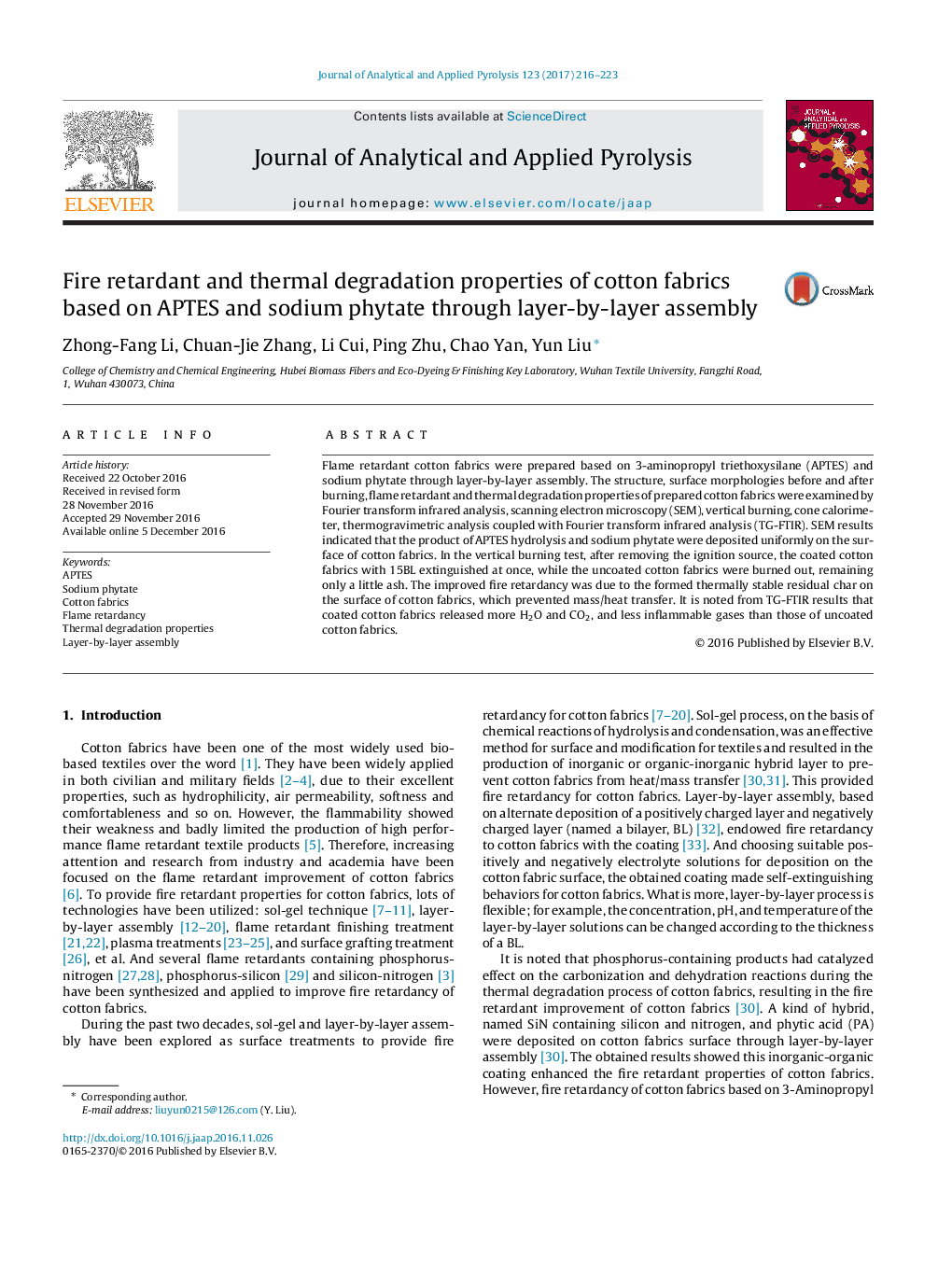| Article ID | Journal | Published Year | Pages | File Type |
|---|---|---|---|---|
| 5134540 | Journal of Analytical and Applied Pyrolysis | 2017 | 8 Pages |
â¢Flame retardant cotton fabrics were prepared based on 3-Aminopropyl triethoxysilane APTES and sodium phytate through layer-by-layer assembly.â¢The coated cotton fabrics owned better flame retardancy.â¢The deposition of APTES and sodium phytate and cellulose formed char residues on the surface of coated cotton fabrics during the burning process.â¢The deposition of APTES and sodium phytate reduced the release of inflammable gases, and increased the release of nonflammable gases.
Flame retardant cotton fabrics were prepared based on 3-aminopropyl triethoxysilane (APTES) and sodium phytate through layer-by-layer assembly. The structure, surface morphologies before and after burning, flame retardant and thermal degradation properties of prepared cotton fabrics were examined by Fourier transform infrared analysis, scanning electron microscopy (SEM), vertical burning, cone calorimeter, thermogravimetric analysis coupled with Fourier transform infrared analysis (TG-FTIR). SEM results indicated that the product of APTES hydrolysis and sodium phytate were deposited uniformly on the surface of cotton fabrics. In the vertical burning test, after removing the ignition source, the coated cotton fabrics with 15BL extinguished at once, while the uncoated cotton fabrics were burned out, remaining only a little ash. The improved fire retardancy was due to the formed thermally stable residual char on the surface of cotton fabrics, which prevented mass/heat transfer. It is noted from TG-FTIR results that coated cotton fabrics released more H2O and CO2, and less inflammable gases than those of uncoated cotton fabrics.
